Are you looking for the best SEMrush alternative in 2023?
Semrush is an impeccable keyword research tool with nearly six million+ users globally. Its plethora of fantastic features that businesses love includes data about average monthly searches, site audit features, performing keyword research, link-building strategy, and much more. This tool is exceptionally legendary.
This SEO tool offers several intelligent solutions for businesses of all sizes and scales, but why look for alternatives? Although everything is great about Semrush, it can be quite expensive. The heavy price tag is one of the reasons why entrepreneurs prefer to choose other alternatives. So if you are looking for an all-in-one SEO solution tool at an affordable price, this might not be the right choice for you.
So if you want to find out the best Semrush alternatives, cheaper and with complete SEO features, keep reading.
*Disclosure: I only recommend products I would use myself, and all opinions expressed here are my own. This post may contain affiliate links that at no additional cost to you, I may earn a small commission.
Best Semrush alternative in 2023

| Semrush Alternatives | |
|---|---|
| 1. SE Ranking | > Try Now |
| 2. Keysearch | > Try Now |
| 3. AHrefs | > Try Now |
| 4. Moz Pro | > Try Now |
| 5. SerpStat | > Try Now |
| 6. Majestic | > Try Now |
| 7. Spyfu | > Try Now |
| 8. Ubbersuggest | > Try Now |
| 9. Advanced Web Ranking | > Try Now |
| 10. KWFinder / Mangools | > Try Now |
1. SE Ranking

SE Ranking is one of the best cloud-based platforms for SEO and online marketing professionals. It provides a suite of tools for comprehensive website audits, website ranking, competitor analysis, keyword suggestions, backlink monitoring, and much more.
Besides standard SEO tools, it also offers additional features, like a white label and a marketing plan.
This was founded in 2012 by Valvery Kurilov. Today this company has more than 1 million users and is based in Palo Alto, California. It’s an all-in-one SEO platform specially created for small-to-medium size businesses and agencies, and it is one of the best SEO tools regarding value for money.
If you ask me, this is the best SEMrush alternative right now since it provides all the tools you need to perform SEO successfully at a fraction of the price. You can read my full SE ranking review here.
Why Choose SE Ranking Over SEMrush?

SE Ranking Pricing.

- $31/ month for Optimum Plan.
- $71/ month for Plus Plan.
- $151/ month for Enterprise Plan.
You can enjoy all the features with a 14-days free trial.
2. Keysearch.
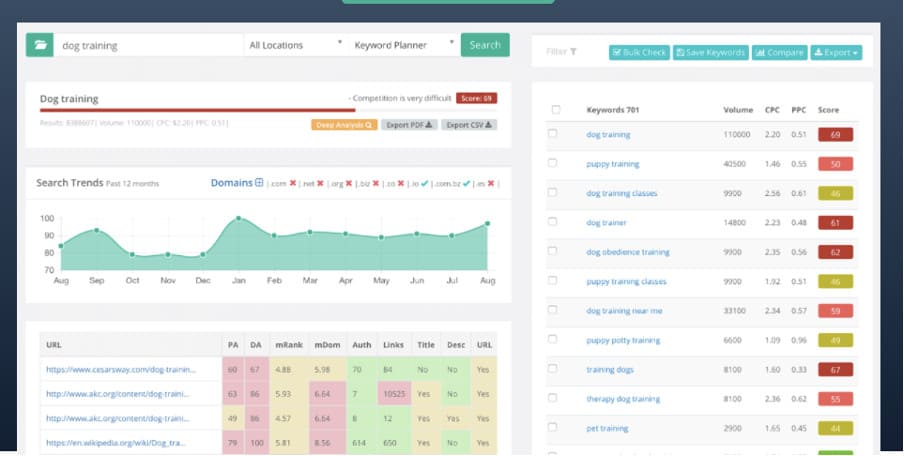
Founded in 2015, this tool is relatively new in the industry, but it has turned into a complete SEO tool over the years. This is the best for those small business owners who have a limited budget and don’t want to spend much on expensive tools.
Its keyword research module offers a set of features related to keywords, competitor analysis, difficulty scores, and so on. When a user enters this module, this tool spits out the top ranking for a specific keyword and offers a long list of related ones.
You can read my full Keysearch review here.
Why Choose Keysearch Over SEMrush?
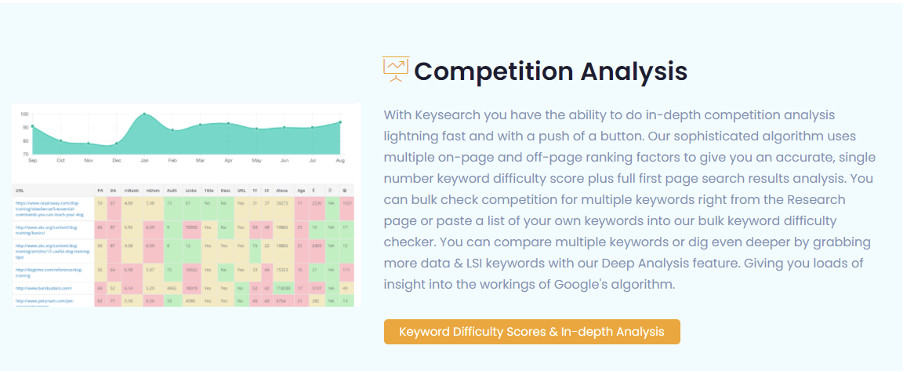
Keysearch Pricing.
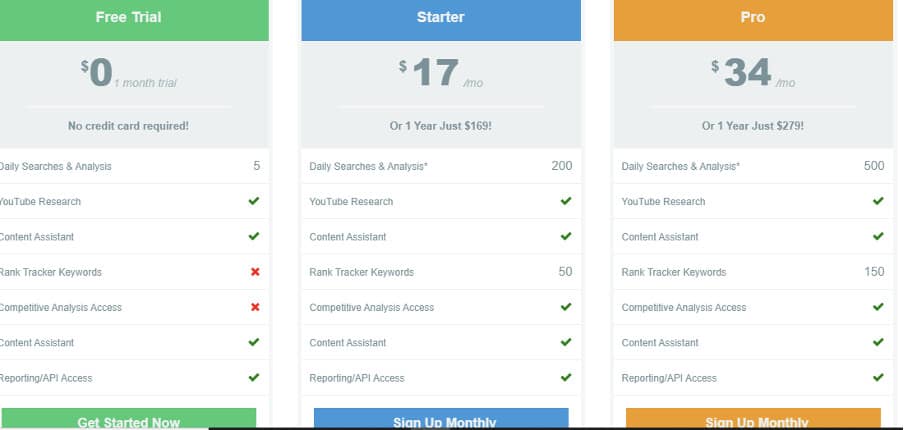
- $0/ month for Free Trial.
- $17/ month for Starter Plan.
- $34/ month for Pro Plan.
3. Ahrefs.

Here comes one of the top Semrush competitors— Ahrefs is the best research and SEO tool you can get right now. It offers the biggest backlink index of any other available tool. The good thing is you can spy on your biggest competitors’ top SEO strategies, their keywords, backlinks, and various other aspects.
Founded in 2011, Ahrefs is a suite of top SEO tools that acquaints users with all the essential ins and outs of content marketing. This tool helps all the users in competitor research to determine high-ranking PPC keywords ideally.
Why Choose Ahrefs Over Semrush?

Ahrefs Pricing.

- $99/ month for the Lite Plan.
- $179/ month for Standard Plan.
- $399/ month for Advanced Plan.
- $999/ month for Agency Plan.
4. Moz Pro.

Moz Pro is a completely upgraded SEO toolset that helps improve overall search engine rankings and website visibility. The best features of this include SEO metrics, like Domain/Page Authority, which offer top-quality data. It helps save time for businesses simply by streamlining workflows.
With its illuminating metrics, like in-depth keyword research, site audits, link profile analysis, ranking performance tracking, and much more, you can get a deep insight into how SEO works.
Its keyword research tool can track Google, Bing, and Yahoo in more than 200 countries. With that, its segmentation feature allows smooth keyword segmentation by location, label, and campaign.
Why Choose Moz Pro Over Semrush?
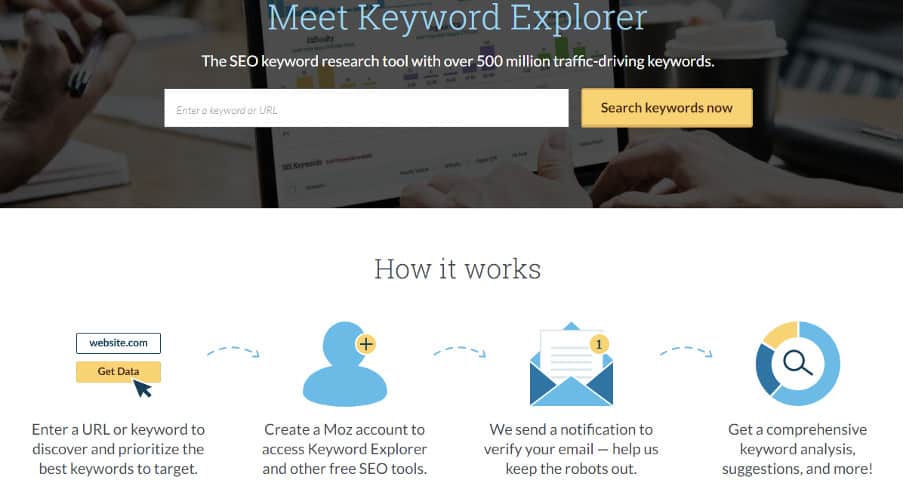
Moz Pro Pricing.
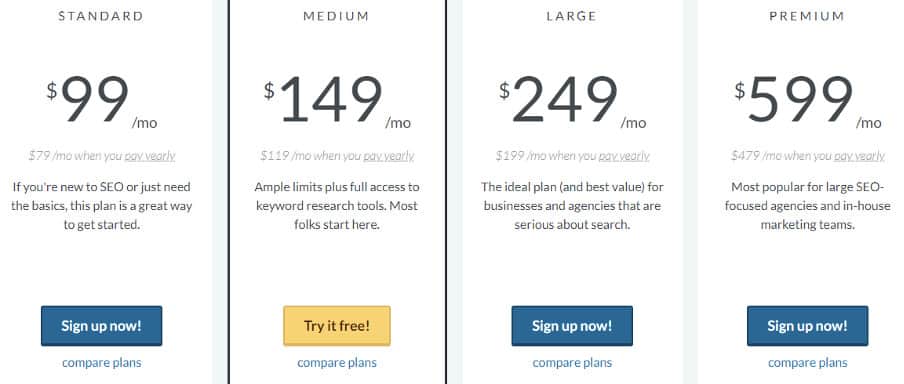
- $99/ month for Standard Plan.
- $149/ month for Medium Plan.
- $249/ month for Large Plan.
- $599/ month for Premium Plan.
5. Serpstat.
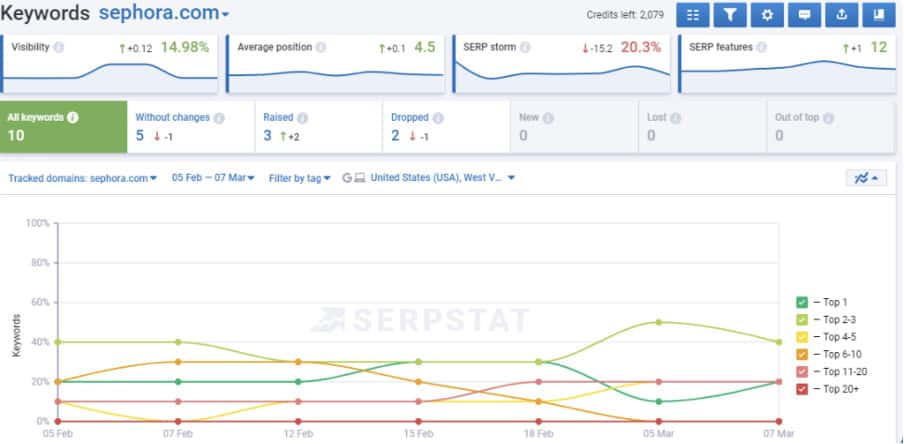
It’s a cloud-based search marketing analysis tool, perfect for all industries and businesses of all niches and sizes. It helps mainly e-commerce businesses and PPC managers. The best thing about this tool is it offers incomparable SEO analysis, analytics, keyword research, backlinking analysis, and much more.
It allows users to track position changes for domains and help to investigate traffic drops and all visibility changes. You can have access to the keywords database, FB shares, and even the estimated traffic volume. With infographics, reports, and email alerts, Serpstat is one of the best Semrush alternatives.
Why Choose Serpstat Over Semrush?
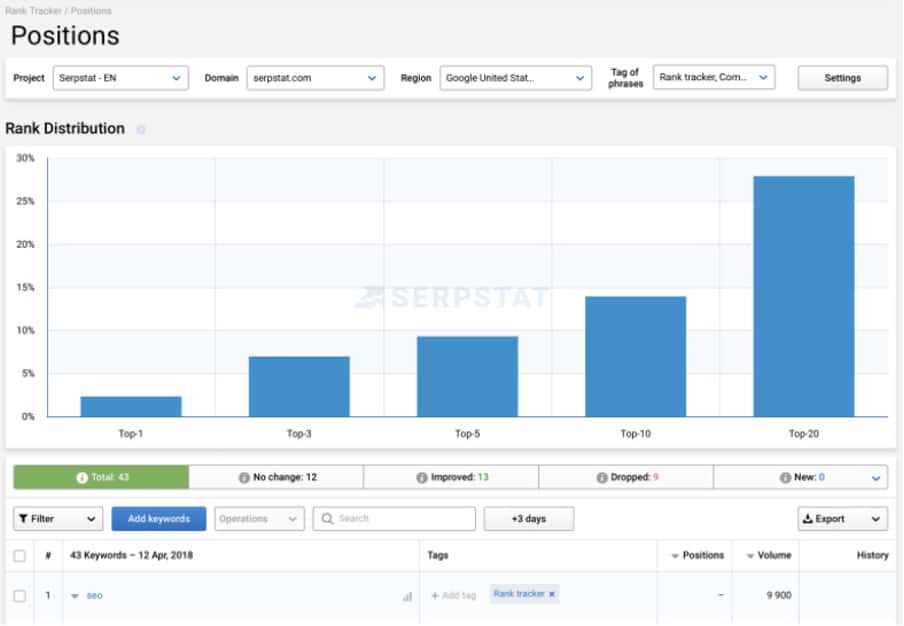
Serpstat Pricing.
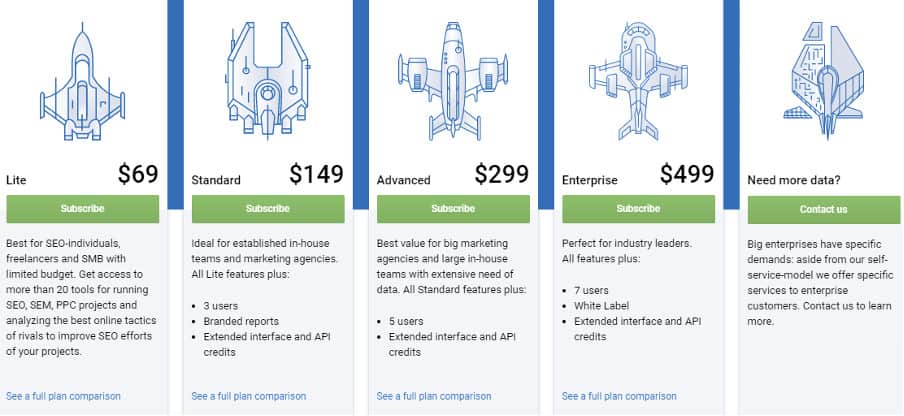
- $69/ month for Lite Plan.
- $149/ month for Standard Plan.
- $299/ month for Advanced Plan.
- $499/ month for Enterprise Plan.
If you are a bigger enterprise, then you can get in touch with the company for a custom Plan.
6. Majestic.

Here comes another competitor— Majestic. It’s one of the most powerful tools for any business, known for its significant link index database.
This tool helps to find the right keywords for your business. With this tool, you can smoothly explore a domain or URL with the smallest details. It also helps to track your social media strategies.
Majestic is particularly specialized in backlinks; with this functionality, you can have the most significant advantage of looking at the website links, including broken links, linked profiles, top pages, anchor text, and so on.
Why Choose Majestic Over Semrush?
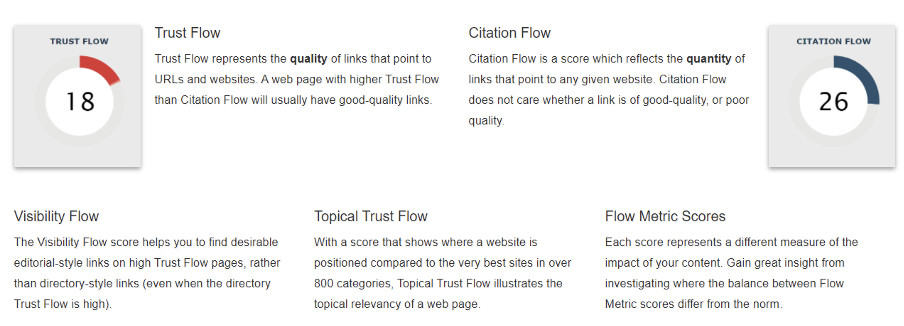
Majestic Pricing.

- $49/ month for Lite Plan.
- $99.99/ month for Pro Plan.
- $399.99/ month for API Plan.
7. Spyfu.

Are you looking for a cost-effective SEO tool? Here comes SpyFu. It’s a perfect Semrush alternative for powerful SEO features like keyword research and detailed competitor analysis. You can conduct keyword research and PPC analysis to understand better how things work. It’s a comprehensive SEO tool as the name suggests, ‘SPY’ you can spy on your competitor’s keywords.
You can use it to search for any domain and can see each place those keywords have shown up on the search engines. It lets you spy on every competitor’s keyword, every organic rank competitors rank for, and every ad variation used under 12 years to get organic traffic.
Why Choose Spyfy Over Semrush?
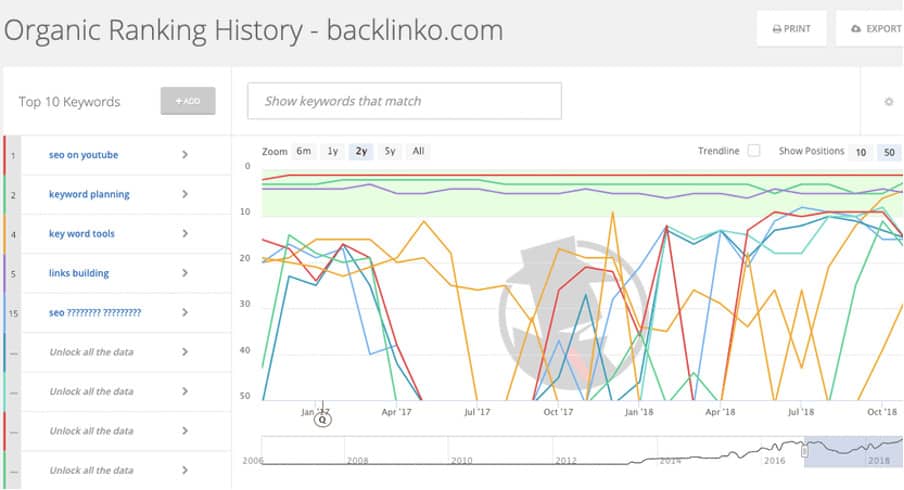
Spyfu Pricing.
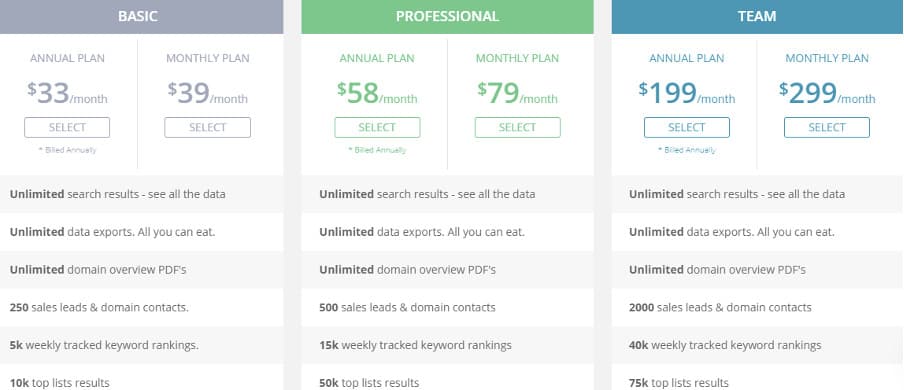
- $39/ month for Basic Plan.
- $79/ month for Professional Plan.
- $299/ month for Team Plan.
8. Ubbersuggest.
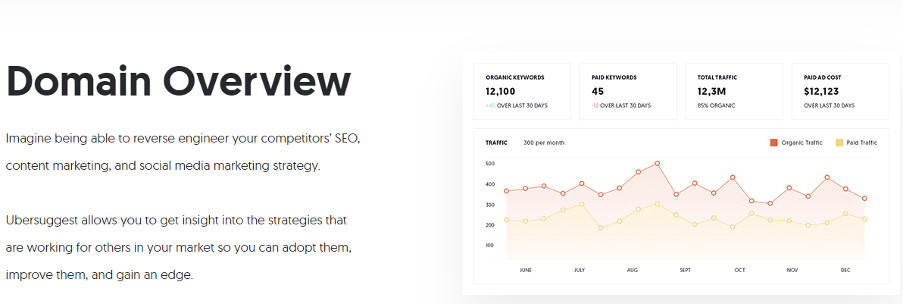
Ubersuggest by Neil Patel is considered one of the top freemium keyword research tools available on the market. If you have been looking for free Semrush alternatives, then Ubersuggest is one of them. It’s a good option for just starting up or trying stuff to see how it works. This tool offers various features, including keyword ideas, related keywords, questions, comparisons, and much more.
With that, it also offers information about keyword search traffic, whether paid or organic. Ubersuggest allows all search marketers to track domains and organize all data into one dashboard.
Why Choose Ubbersuggest Over Semrush?
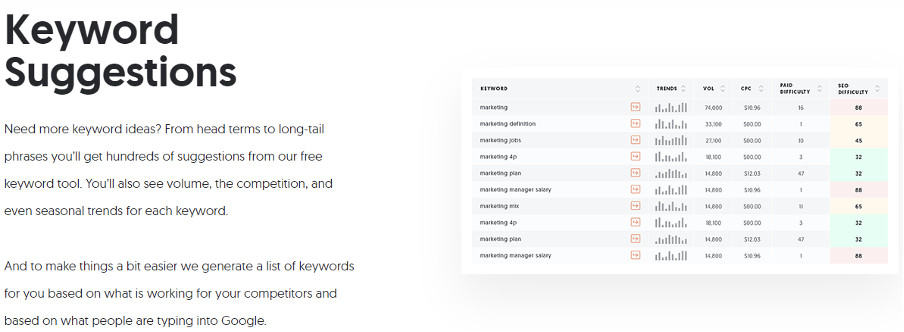
Ubbersuggest Pricing.

- $12/ month for Individual Plan.
- $20/ month for Business Plan.
- $40/ month for Enterprise/ Agency Plan.
You can get a 7-day free trial with all plans.
9. Advanced Web Ranking.
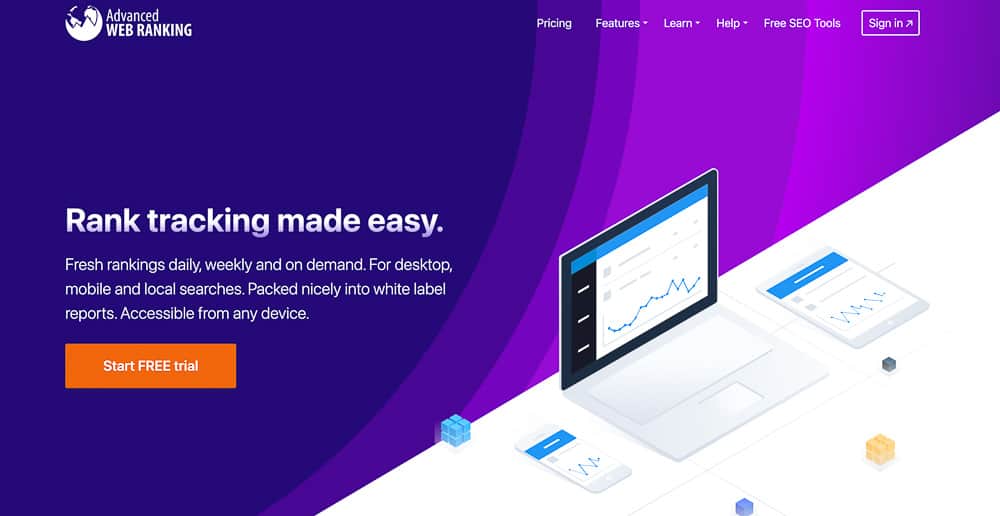
It provides a cloud-based suite of SEO tools that helps small and midsize businesses with ranking, localization, white-labeling, reporting, analytics, and API. Users can monitor ranking data for their businesses and measure local online performance, which helps increase the visibility of local listings. Moreover, Advanced Web Ranking can be leveraged to generate sales through social media integration and multi-language website configuration.
Why Choose Advanced Web Ranking Over Semrush?
Advanced Web Ranking Pricing
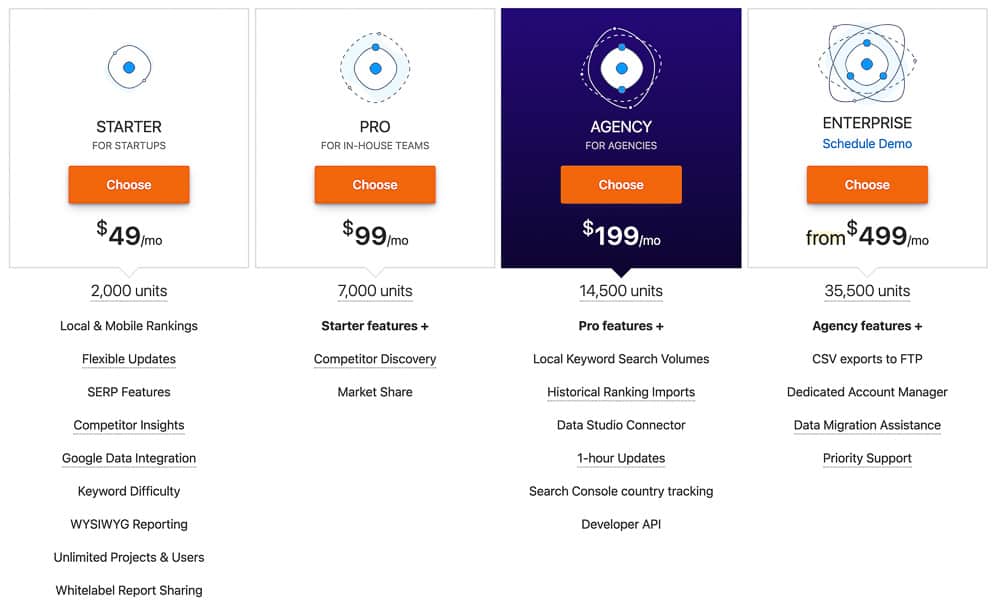
- $49/month for Starter Plan.
- $99/month for Pro Plan.
- $199/month for Agency Plan.
10. KWFinder / Mangools

KWFinder is another cheap keyword research tool offering great features. It’s got a seamless interface, powerful features, and a beautiful design, which makes it a great choice for beginner bloggers.
They are cheaper than most SEO tools and feature accurate search volume results and extra services such as SERPChecker, SERPWatcher, LinkMiner, and SiteProfiler.
Why Choose KWFinder / Mangools Over Semrush?
KWFinder / Mangools Pricing
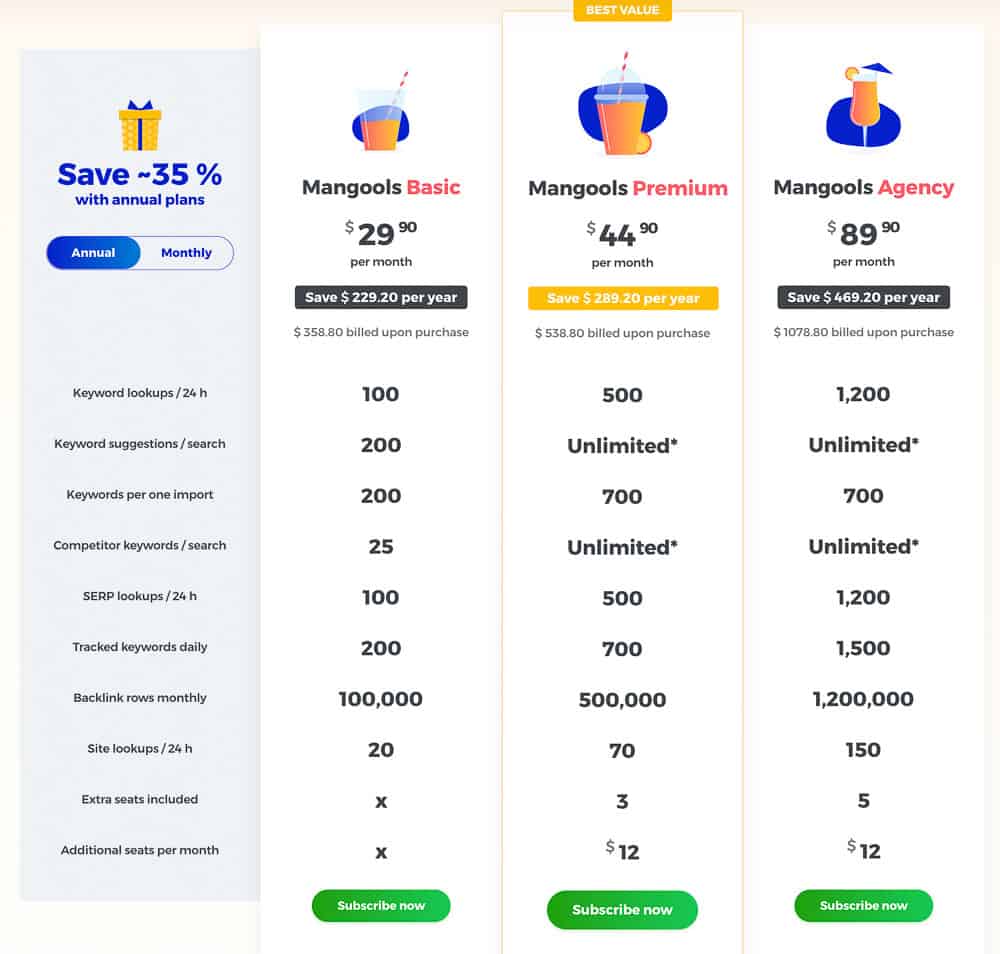
- $29,90/month for Mangools Basic.
- $44,90/month for Mangools Premium.
- $89,90/month for Mangools Agency.
Top Semrush Competitor.

Even though the spectrum of SEO tools is improving by the year, the other tool is more similar to SEMrush, and its most direct competitor is probably AHrefs. Similarly to SEMrush, this is a more premium tool normally used by agencies or SEO experts who need a powerful tool and get as much data as possible.
They both are amazing tools and great at their primary function: Keyword research. There is much more to it than simply research since they both provide powerful analytics, information about traffic, backlinks, etc. However, they also come at an elevated price tag. So as mentioned previously, these are not probably the first choice for inexperienced users or low-budget profiles.
SEMrush vs AHrefs- Which is best?
This is a very personal question since each tool excels in different aspects. In my opinion and after using them both for a few years:
- SEMrush is best for anything related to backlinks. The backlinks analysis module is probably the best one out there. They can quickly identify indexed links, suggest backlink opportunities, and also provide a toxicity link report making it easy to identify some links you might want to disavow.
- AHrefs is best for keyword research and competitor analysis. I find numbers in keyword research to be way more accurate both in search volume and difficulty score. With Semrush, it looks like you can rank almost for anything when this is not quite the reality. Moreover, I like AHrefs interface more. I think it is more intuitive, and it is easier to perform competitor analysis.
Choosing the Best Semrush Alternative.
While looking for the right alternative to Semrush, you need to focus on the features you may need to improve your business.
Here are some top things you should consider:
- How convenient or user-friendly are the current tools?
- Are the SEO features enough for your business?
- Is it easy to use?
- Is the pricing market competitive or less?
The best way is to formulate all those questions required to conduct a successful business and then choose the best Semrush alternatives based on the answers. This will help you in making a formal decision.
Lastly, if what you need is just a simple and free online tool for quick SEO checks, I suggest you check Prepostseo.
You might want to read:
SEMrush Alternatives- Conclusion.
Undoubtedly, SEO, link building, and audits are the most important aspects and play an important role as game-changers for your business. Having access to the right information allows you to uncover the hidden secrets to improve your website’s authority and keep moving at the top of the search results.
With the right SEO tool, you can get a better rank in the results and get more visibility effortlessly.
If you do have the budget, SEMrush is a solid SEO tool, and I encourage you to use it. Otherwise, I suggest you consider some of these Semrush alternatives to help you meet your SEO targets. You can compare prices, features, and commendable extra features to choose the right tool.
I suggest you consider some of these Semrush alternatives to help you meet your SEO targets. You can compare prices, features, and commendable extra features to choose the right tool.
Now it is your turn!
Are you ready to boost your SEO with any of these SEMrush alternatives?
Leave a comment with your answer below.
FAQs

RELATED CONTENT
Niche SEO Strategies for Local Businesses
In the modern world, creating SEO strategies that target your niche is extremely important. It…
Maximize Your Rankings With a Top-Notch Backlinks Marketplace
Have you ever wondered why some websites “effortlessly” land at the top of Google’s search…
SERP Empire Review: Pros, Cons, Pricing, and Alternatives
Are you looking for methods to improve your website´s SEO and wondering if SERP Empire…
Programmatic SEO: What is it & How to do it
Are you looking for a way to optimize your website and get more traffic? Programmatic…
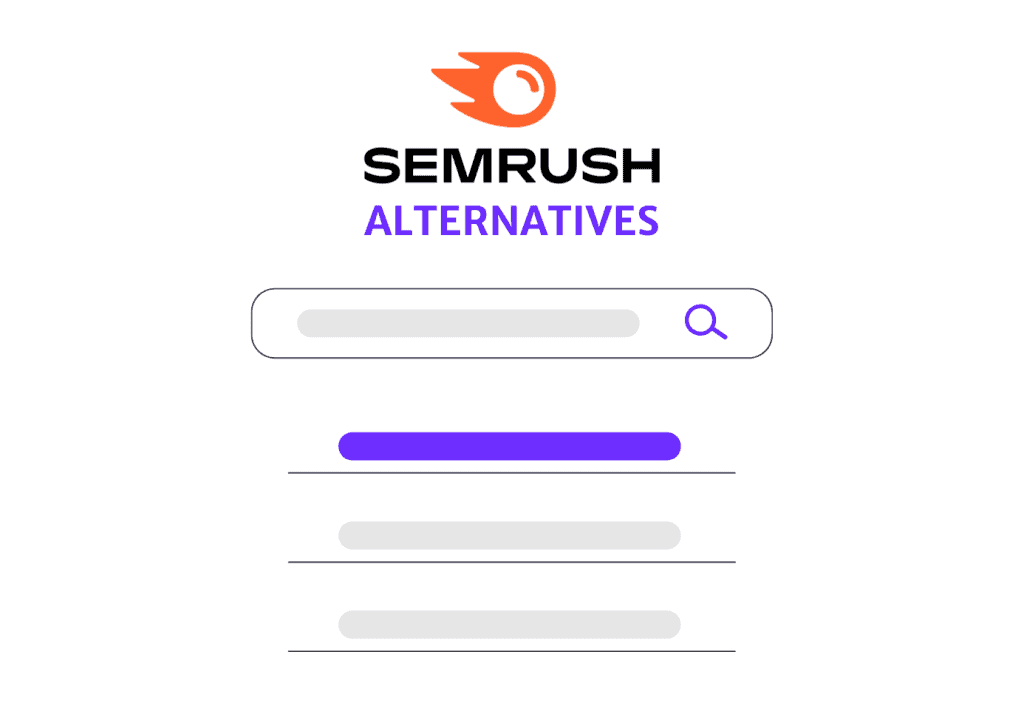


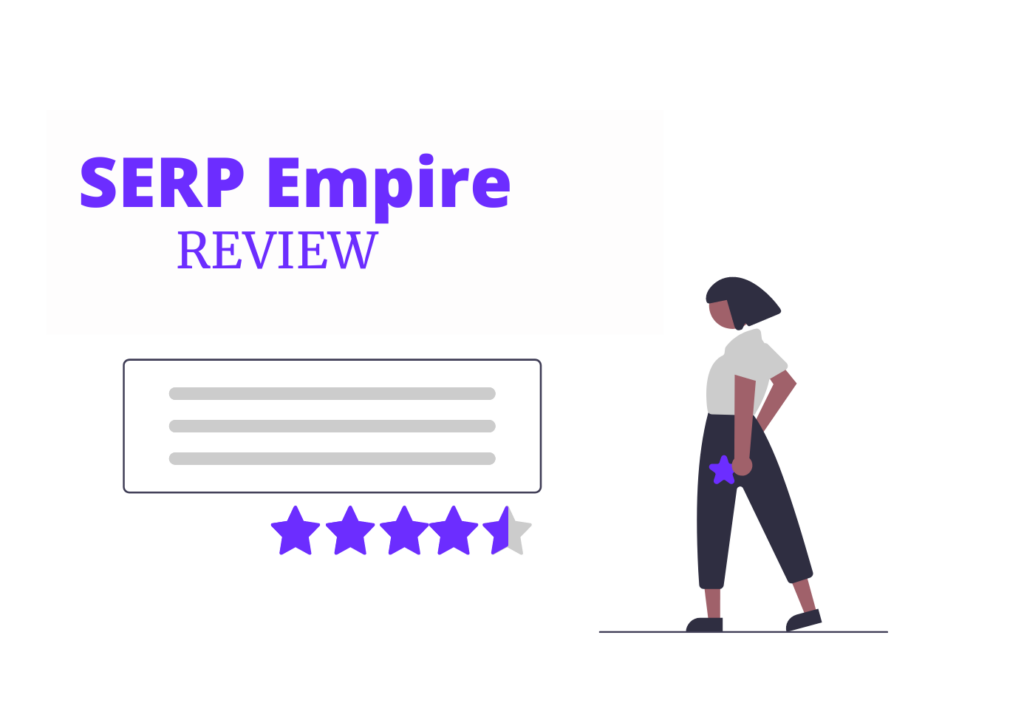

Hi Sergio,
Thank you for providing such brief information. These alternatives are really good and considered to be good semrush alternatives.
And I personally like Spyfu and ahrefs most because their UI easy to use compared to semrush.
BTW, which tool do you like most?
Hi Basant,
Thanks for stopping by.
In terms of quality, Ahrefs is probably the best choice. However, in terms of value for money, I’d say Serpstat or SE ranking.
Hi Sergio, your post about the alternatives to SEMrush is valuable, particularly since not all are willing to pay a monthly sub fee of $120.
Ahrefs, Moz, SERanking, and the other in your list are excellent tools.
I like to compare results to get an average ratio. So, after using SEMrush, I quarantify it with Ahrefs and Ubersuggest. That’s because these tools provide variable results. So helps one get a more better result.
Thanks for sharing!
Hi Moss, I absolutely agree. It is important to test them and compare the results and find out which one adapts best to your needs. Most of the time is not just choosing the most expensive because it has it all, but choosing the one that has it all for your needs.